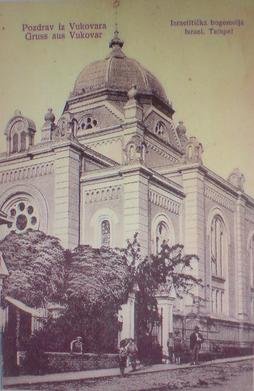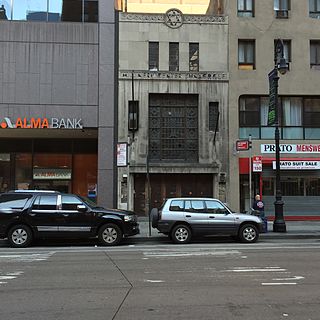
Sisak is a city in central Croatia, spanning the confluence of the Kupa, Sava and Odra rivers, 57 km (35 mi) southeast of the Croatian capital Zagreb, and is usually considered to be where the Posavina begins, with an elevation of 99 m. The city's total population in 2021 was 40,185 of which 27,886 live in the urban settlement (naselje).

The Battle of Sisak was fought on 22 June 1593 between Ottoman Bosnian forces and a combined Christian army from the Habsburg lands, mainly Kingdom of Croatia and Inner Austria. The battle took place at Sisak, central Croatia, at the confluence of the Sava and Kupa rivers, on the borderland between Christian Europe and the Ottoman Empire.

Hrvatska Kostajnica, often just Kostajnica, is a small town in central Croatia. It is located on the Una river in the Sisak-Moslavina County, south of Petrinja and Sisak and across the river from Bosanska Kostajnica in Bosnia and Herzegovina.

Louis Rabinowitz was an Orthodox rabbi, historian and philologist of the 20th century.

The history of the Jews in North Macedonia stretches back two thousand years, beginning during Roman antiquity, when Jews first arrived in the region. Today, following the Holocaust and emigration, especially to Israel, around 200 Jews remain in North Macedonia, mostly in the capital, Skopje and a few in Štip and Bitola.

The history of the Jews in Croatia dates back to at least the 3rd century, although little is known of the community until the 10th and 15th centuries. According to the 1931 census, the community numbered 21,505 members, and it is estimated that on the eve of the Second World War the population was around 25,000 people. Most of the population was murdered during the Holocaust that took place on the territory of the Nazi puppet state called the Independent State of Croatia. After the war, half of the survivors chose to settle in Israel, while an estimated 2,500 members continued to live in Croatia. According to the 2011 census, there were 509 Jews living in Croatia, but that number is believed to exclude those born of mixed marriages or those married to non-Jews. More than 80 percent of the Zagreb Jewish Community were thought to fall in those two categories.

The history of Jews in Bosnia and Herzegovina spans from the arrival of the first Bosnian Jews as a result of the Spanish Inquisition to the survival of the Bosnian Jews through the Holocaust and the Yugoslav Wars. Judaism and the Jewish community in Bosnia and Herzegovina has one of the oldest and most diverse histories in the former Yugoslav states, and is more than 500 years old, in terms of permanent settlement. Then a self-governing province of the Ottoman Empire, Bosnia was one of the few territories in Europe that welcomed Jews after their expulsion from Spain.

The Old Synagogue in Dubrovnik, Croatia is the oldest Sefardic synagogue still in use today in the world and the second oldest synagogue in Europe. It is said to have been established in 1352, but gained legal status in the city in 1408. Owned by the local Jewish community, the main floor still functions as a place of worship for the High Holy Days and special occasions, but is now mainly a city museum which hosts numerous Jewish ritual items and centuries-old artifacts.
Sisak was a World War II concentration and transit camp located in the town of the same name in the Axis puppet state known as the Independent State of Croatia (NDH). It was operational between 1941 and 1945.

Božidar Špišić was a Croatian orthopedist and rector of the University of Zagreb.
Congregation Beth Jacob is an Orthodox Jewish congregation located at 1855 Lavista Road in Atlanta, Georgia, United States. It is Atlanta's largest Orthodox congregation.

The Holocaust in the Independent State of Croatia involved the genocide primarily of Jews, and also the genocide of Serbs and Romani (Porajmos), within the Independent State of Croatia, a fascist puppet state which existed during World War II, was led by the Ustaše regime, and ruled an occupied area of Yugoslavia which included most of the territory of modern-day Croatia, the whole of modern-day Bosnia and Herzegovina and the eastern part of Syrmia (Serbia). Of the 39,000 Jews who lived in the NDH in 1941, the United States Holocaust Memorial Museum states that more than 30,000 were murdered. Of these, 6,200 were shipped to Nazi Germany and the rest of them were murdered in the NDH, the vast majority in Ustaše-run concentration camps, such as Jasenovac. The Ustaše were the only quisling forces in Europe who operated their own extermination camps for the purpose of murdering Jews and members of other ethnic groups.
Beno Zupančič was a Slovene writer and journalist. He is best known for his novels and youth literature.
Vladimir Majder (1911–1943) was a Croatian Partisan who fought in the Spanish Civil War and World War II.

The Vinkovci Synagogue was a synagogue in Vinkovci, Croatia. It was among the largest and the most prestigious synagogues in Croatia.

Vukovar Synagogue was the main synagogue of the Jewish community in Vukovar, Croatia, after the first smaller synagogue was sold to the Calvinist church in 1910. It was constructed in 1889 in the Kingdom of Croatia-Slavonia, within the Austria-Hungary.

Sisak Synagogue was the 19th century synagogue in Sisak, Croatia built in the 1880. During World War II it was devastated and robbed, and synagogue rabbi Beno Heisz was killed in 1943. Synagogue today serves as a music school.

Bjelovar Synagogue is a former synagogue in Bjelovar, Croatia, which is currently a cultural center.

Millinery Center Synagogue is a Jewish Orthodox synagogue located in the Garment District of New York City.
The Great Synagogue on Wolmarans Street, Johannesburg, is known as the city's mother synagogue and "the crown jewel of Orthodox Judaism in South Africa." All large-scale Jewish events in the Gold City were held in the building, and for all its existence it was the seat of the country's chief rabbi. Northward migration by congregation members led to the synagogue relocating in 1994, to be replaced by the Great Park Synagogue on Glenhove Road, Oaklands, built on the model of the Great Synagogue, whose own architecture in turn was inspired by the Hagia Sophia.













